Your Dog’s Shedding — Normal or Excess?
This time of year, when the sun begins to shine a little longer each day and the heat index starts to rise, you may notice something… Your dog is leaving little hair tumbleweeds across the tiles. Shedding can be a major problem for some breeds, and many pet owners have the lint rollers in hand and vacuums going strong.
Shedding is a normal process of keeping your dog’s skin and coat healthy. There are times, though, when hair loss can signal a larger issue. The team at Oakland Veterinary Referral Services wants to tackle the question of shedding and explore the causes and conditions of excess shedding.
If your dog is shedding when the temperatures start to rise, mid- to late spring and continuing through the summer months, this is probably normal shedding. The old or damaged hairs fall out to make way for new hair growth. Shedding also facilitates the disbursement of natural oils that keep the coat healthy.
But how much shedding is normal? That varies by dog based on several factors:
Other factors such as changes in your dog’s hormones after pregnancy, or your dog’s nutrition can influence the amount of hair that your dog sheds. The coarseness and texture of the fur can also affect how much is shed.
Anxiety can trigger a number of health problems in humans, including hair loss. This is also true for canines. When your dog is nervous on a car ride or is fearful at the veterinarian’s office, you may have noticed that they shed a lot. But why is this?
When your dog is stressed, a release of epinephrine — also known as adrenaline — releases the hair. It’s unclear why this occurs, but you can be sure that when your Fido or Princess gets a scare, the fur will indeed fly.
Unfortunately, some dogs have chronic stress due to behavioral issues or situations that cause them to be fearful. This is especially noticeable in a shelter environment, for example. A change at home, such as an additional pet or a move, can also trigger stress.
If the stress is temporary — like those terrifying trips in the car, or the vacuum’s roar — then it’s probably nothing to worry about. If your dog has chronic stress because of a behavioral challenge (such as fear of socialization), it’s another matter. You will want to get the advice of your veterinarian or Veterinary Behaviorist. Chronic stress can have adverse effects on your dog’s health in ways that go beyond just shedding. Professional consultation is necessary.
You can help relieve general stress with the use of:
Is Your Dog’s Shedding Becoming Noticeable?
If you notice that your dog is shedding over and above what is normal, we recommend scheduling an appointment with your veterinarian. Even if there is a simple explanation, it’s important to rule out any negative health concerns for the wellbeing of your fur friend.
Have additional questions about stress shedding or anxiety? Please feel free to contact us.
Parasites
Ticks, mites, fleas, lice, ticks and worms are all parasites that can cause dog hair loss. They all cause discomfort for your dog and if not treated, can cause your dog to lose hair. If you think your dog has any of these parasites, consult your vet to find the right treatment.
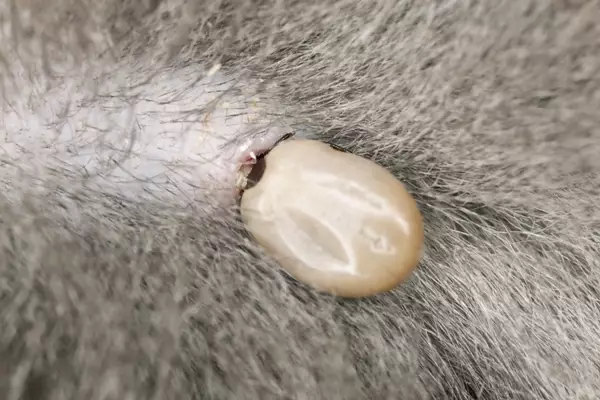
Ticks are probably the most dangerous of all parasites, especially the deadly Paralysis Tick.
Ticks are best removed using special tick tweezers. If the tick is not removed, the dog will scratch and scratch in its attempt to get rid of the tick. From all this scratching, the hair will fall out and the dog can develop a bald patch, which can easily get infected.
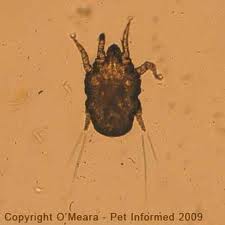
Mites are most commonly found in warm, moist areas on your dog’s body, such as its ears or armpits. Even if they don’t transmit any diseases, mites can still make your dog extremely itchy and cause incredible discomfort. Your dog will scratch until the skin opens, which can then become infected if not treated. To get rid of these annoying little parasites a vet visit is recommended, as a course of antibiotics might be required along with an anti-mite treatment.
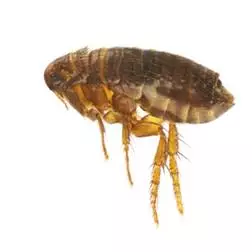
Fleas are more common in warmer months and can be caught from other dogs or from dormant flea eggs on rugs and bedding. Your dog will be very itchy and will often try to scratch or bite itself to provide relief. If not treated, all the scratching and biting can cause the dog to lose hair and can lead to bald patches.
To prevent fleas, make sure you regularly use either preventative flea and tick treatments like Nexgard/Bravecto chews or spot-on (topical) treatments like Advantix. There are also natural products on the market like amber collars and cedar oil sprays that offer an alternative to the chemical tablets and spot on treatments.
Once your dog has fleas, anti-flea shampoos or sprays can help to get rid of them, as well as tablets such as Capstar that kill the fleas on the dog. Once infection has occurred, it is important to break the flea cycle, as fleas typically lay eggs in carpets, dog beds and other places in your home, and can lie dormant for months waiting for a host.
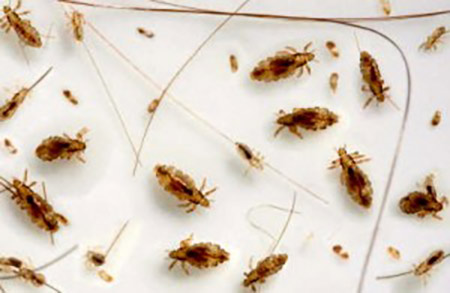
Lice not only cause the skin to itch but can also cause skin allergies. This nasty little parasite can cause immense discomfort for your dog and because of the constant scratching, your dog can lose hair and its skin can get infected.
There are various products on the market to prevent lice infesting your dog, such as Dermacare Malaseb Shampoo and Fido’s Pyrethrin Shampoo for Dogs and Cats. Before using any of these products, please consult your vet.
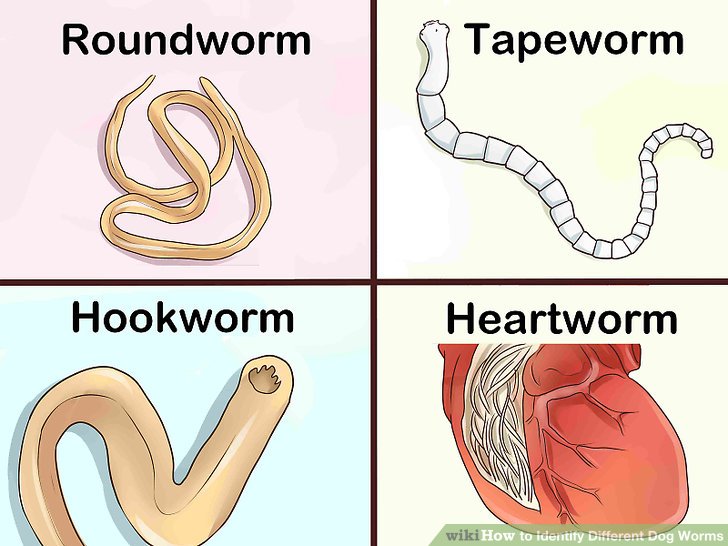
Worms can cause hair loss in dogs by interfering with the dog’s ability to process nutrients. Worms live inside the dog and can be transmitted from dog to dog through sniffing or licking each other’s anuses. Dogs who have worms typically show signs of being tired and are quicker to fatigue.
Worms are highly contagious, so it is of upmost importance to regularly de-worm your dog. Regular de-worming can not only prevent dog hair loss but also result in a happier, healthier dog.
Learn more about different types of worms in dogs: